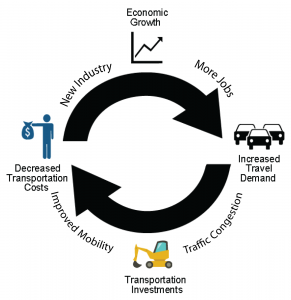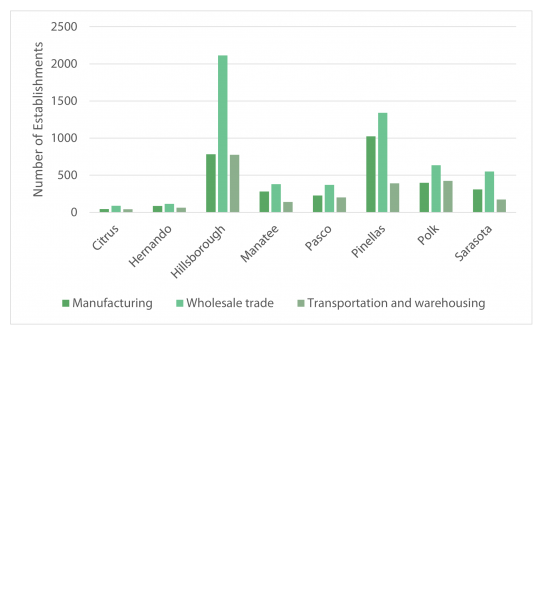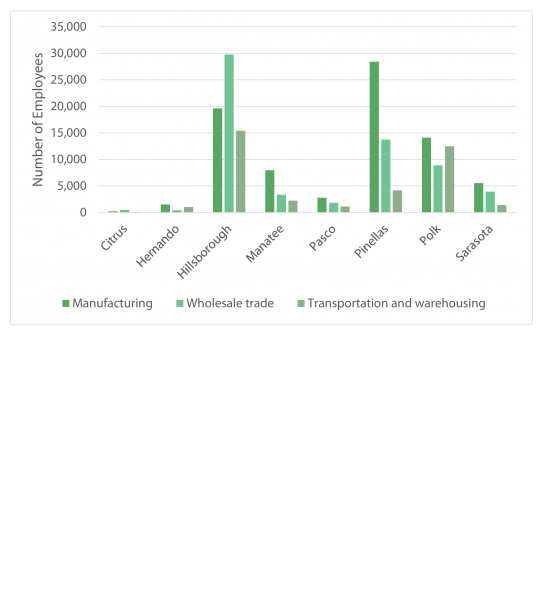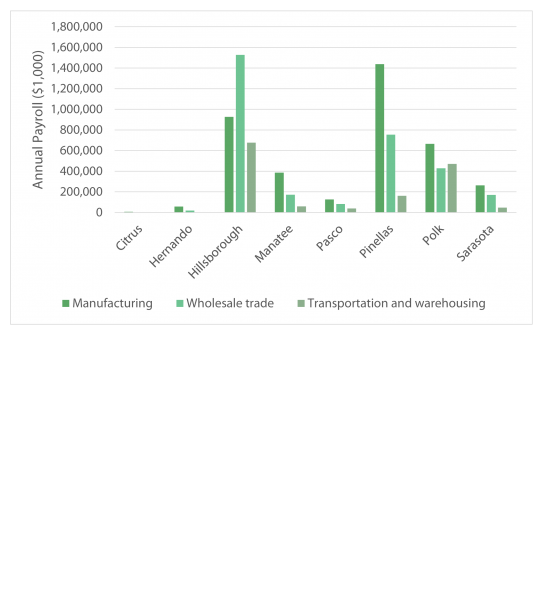Back to Strategic Freight Plan Web Document
The freight transportation system is a critical component of the regional economy. Efficient and safe freight mobility supports commercial and industrial growth, job creation, and a high quality of life. The freight transportation system consists of the trucking industry, maritime shippers and supportive trades, air cargo providers, freight rail carriers, intermodal terminals, warehousing facilities and distribution centers.
Florida has the opportunity to emerge as an important trade hub linking the southeastern U.S. with trading partners to the south, west, and east. The Tampa Bay region’s central location within the State of Florida positions it to increase trading activity within the state particularly along the Interstate 4 corridor that is expected to grow at a higher rate than the rest of the state as a whole. The expansion of the Panama Canal and the potential for national economic policies to increase trade between Latin America and the United States further emphasize Tampa Bay’s importance as an international distribution hub.
Investments in freight transportation improvements that reduce the cost of moving goods to and from markets increase and sustain economic growth. Mutual support across economic development plans, transportation plans, and local government comprehensive plans is critical to the successful capture of future economic opportunities in goods movement. Effective integration of freight infrastructure, equipment, personnel, and information systems is also crucial to the efficient movement of goods throughout the region and to sustain the regional economy. This underscores the importance of freight considerations in the development of annual priorities for transportation improvement programs.
Regional Freight Related Employment
The freight transportation industry is a major employer in the Tampa Bay region. Freight transportation providers, warehouses, and distribution centers directly employ nearly 32,000 people working to expedite the movement of goods to consumers and businesses. When other freight generating activities including manufacturing, mining, and wholesale trades are included, the total freight-related employment in the eight-county Tampa Bay region reaches over 240,000 workers.



